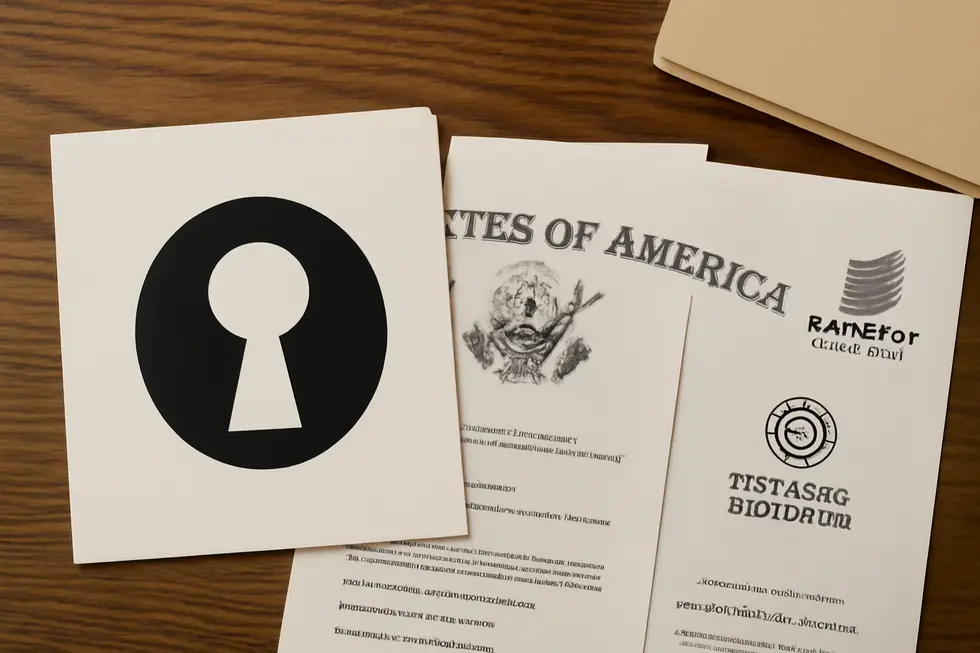Introduction
Establishing a strong brand identity goes beyond just a memorable name—it requires a distinctive visual representation that resonates with customers and sets a business apart in a crowded marketplace. Design mark trademarks serve as the legal shield for these unique logos, symbols, and graphic elements that visually communicate a brand’s essence. For business owners, understanding how to register, maintain, and leverage design marks is crucial to safeguarding their brand’s visual assets and preventing costly infringements. This guide dives deep into three key aspects of design mark trademarks: the registration process and legal framework that secure your visual identity; the scope and nuances of protection these design marks provide compared to traditional word marks; and practical applications illustrated through a real-world case study highlighting strategic brand management. Together, these chapters offer business leaders the knowledge to proactively protect the visual foundation of their brand’s success.
Tables of Contents
Chapter 1: Registration Process and Legal Framework of Design Mark Trademark
- Navigating the Registration Journey: Key Procedures and Legal Safeguards for Design Mark Trademarks
- Navigating Legal Protections: Trademark Versus Copyright and Symbol Use in Design Mark Registration
Chapter 2: Scope and Nature of Protection Provided by Design Mark Trademark
- Defining the Boundaries: Exclusive Rights and Geographic Reach of Design Mark Trademarks
- Legal Remedies and Duration: Defending and Sustaining the Protection of Design Mark Trademarks
Chapter 3: Case Study and Practical Applications of Design Mark Trademark
- Strategic Legal Enforcement and Combatting Trademark Dilution in Design Mark Protection
- Leveraging Design Mark Trademarks for Global Business Growth and Protection
Chapter 1: Registration Process and Legal Framework of Design Mark Trademark

1. Navigating the Registration Journey: Key Procedures and Legal Safeguards for Design Mark Trademarks
The registration of a design mark trademark is a meticulous process governed by structured legal procedures that ensure the distinctiveness and enforceability of visual brand elements. At its inception, the journey begins with the application filing, where the applicant submits a detailed application to the trademark office—such as the USPTO in the United States—specifying not only personal and business information but also the nature of the mark as a design mark. This application must include a precise and clear graphic representation of the design element sought for protection, distinguishing it from word marks that protect textual elements alone. Applicants must also specify the classes of goods or services the mark will cover, aligning with internationally recognized classification standards, and indicate either actual use of the mark in commerce or a bona fide intent to use it in the future.
Following submission, the application undergoes a thorough examination by trademark examiners who verify compliance with legal standards. This includes assessing whether the mark is inherently distinctive or has acquired distinctiveness and ensuring it does not conflict with existing registered or pending trademarks. The examiners employ tools like the Design Search Code Manual to systematically compare the applied graphic with existing design marks for potential similarity that could cause consumer confusion. If deficiencies or conflicts are found, an office action is issued, requiring the applicant to address concerns through clarifications or amendments. Successfully resolving these hurdles leads to the mark’s approval for publication.
Publication entails the mark’s official appearance in the trademark office’s gazette, initiating a statutory opposition period—commonly 30 days in the U.S.—during which third parties can formally challenge the registration. Opposition grounds typically revolve around the likelihood of confusion with their existing marks, descriptiveness, or claims of prior rights. The opposition phase is adversarial, involving submission of evidence, legal arguments, and adherence to procedural rules dictated by the trademark board or tribunal. A successful opposition halts registration, while failure to oppose or an unsuccessful opposition enables the design mark to proceed to registration.
Once registered, the trademark owner obtains exclusive rights to use the design mark in commerce for the registered goods or services, strengthening brand identity and legal protection against infringement. However, these rights require active maintenance: trademark owners must periodically renew registrations—usually every ten years—and submit proof demonstrating continuous use of the mark. Failure to comply with renewal or use requirements risks cancellation and the subsequent loss of protection.
Underlying this entire process is a robust legal framework defined by national trademark statutes like the Lanham Act in the U.S. and international treaties such as the Madrid Protocol. These laws and treaties establish standards for registration, examination, opposition, and maintenance, balancing trademark owners’ rights with public interest. Opposition proceedings function to prevent registration of conflicting marks early, while cancellation processes may later challenge registrations based on non-use or improper conduct. Both demand substantiated evidence, reflecting a system designed to maintain clarity and fairness in trademark protection.
Understanding these procedural stages and legal safeguards is essential for any entity seeking to protect a design mark trademark effectively. For more insights on securing trademarks that encompass both names and logos, see this resource on trademark protection for business names and logos.
External reference: US Trademark Registration Procedure – IndiaFilings
2. Navigating Legal Protections: Trademark Versus Copyright and Symbol Use in Design Mark Registration
Understanding the distinct legal protections afforded by trademark and copyright laws is essential when registering and safeguarding a design mark trademark. While both address intellectual property, their scopes and enforcement mechanisms differ significantly, impacting how design marks are protected in commerce.
A trademark primarily protects identifiers that signify the source of goods or services, such as logos, brand names, or slogans. It serves a critical role in commercial environments by preventing consumer confusion and preserving brand identity. When a design mark is registered with the United States Patent and Trademark Office (USPTO), it gains federal protection, allowing the owner to use the ® symbol. This symbol signals to the public and competitors that the mark is federally registered and enjoys nationwide legal protection against unauthorized use. The trademark registration process involves an exhaustive search to avoid conflicts with existing marks, a formal application submission, review by the USPTO, public notice through publication, and ongoing maintenance through periodic renewals. This process ensures that the design mark functions specifically as a source identifier rather than just an artistic creation.
In contrast, copyright protects original creative expressions like artwork, literature, music, or graphic designs. Copyright arises automatically upon creation of an original work and generally covers the creative and artistic elements themselves, not their commercial use as brand identifiers. For logos, copyright protection applies only if the design element contains sufficient originality to stand as an independent piece of artwork beyond its role as a brand symbol. While copyright registration is not mandatory, it can provide enhanced enforcement capabilities. However, copyright protection does not prevent others in commerce from adopting similar logos or designs as trademarks do, highlighting the fundamental difference between these protections.
These differences extend to the usage of symbols that communicate rights status: the ® symbol indicates a federally registered trademark with enforceable nationwide rights; the ™ symbol denotes a claim of trademark rights even if the mark is not formally registered; conversely, the © symbol signals copyright protection and is unrelated to trademark claims. For businesses, correctly displaying these symbols ensures clarity regarding their intellectual property rights and deters infringement.
Further distinctions arise with related concepts such as trade dress, which protects the overall visual appearance or packaging of a product, provided it is distinctive and non-functional. Trade dress protection requires proving consumer recognition of the design’s secondary meaning. This is separate from trademark protection, which centers on specific marks or logos.
The supplemental register offers a pathway for design marks not immediately eligible for full registration, such as descriptive marks that may later gain distinctiveness. This allows certain limited protections and eventual progression to the principal register once distinctiveness is demonstrated.
By differentiating the protections and legal frameworks of trademark and copyright, businesses can strategically protect their design marks through appropriate registration and symbol usage, strengthening their brand presence and legal standing. For more detailed guidance on trademark protection for business names and logos, see the extensive resources at trademark2go.com.
For official procedural details and definitions regarding trademark and copyright distinctions within design marks, the USPTO remains an authoritative source: https://www.upcounsel.com/list-of-trademarks-and-logos
Chapter 2: Scope and Nature of Protection Provided by Design Mark Trademark

1. Defining the Boundaries: Exclusive Rights and Geographic Reach of Design Mark Trademarks
Design mark trademarks offer brand owners exclusive rights to the visual elements that distinguish their goods or services. These exclusive rights allow the holder to control the use of a specific design—such as a logo or symbol—in connection with the goods or services for which the mark is registered, thereby preventing others from using confusingly similar designs that could mislead consumers or dilute the brand’s distinctiveness. This exclusivity is fundamental to safeguarding a brand’s visual identity in the marketplace.
However, these rights are not universal and are primarily confined by geographic boundaries established by the jurisdiction in which the trademark is registered or used. Trademark law typically operates on a territorial basis, meaning that protection is effective only within the country or region where registration has been secured or where the mark has acquired rights through continuous use. For instance, securing a federal design mark registration in the United States grants nationwide protection under U.S. law but does not extend automatically beyond its borders.
The distinction between “first-to-file” and “first-to-use” systems further defines the scope of rights in various countries. Many jurisdictions adopt a first-to-file approach, granting rights based on the initial registration regardless of prior use. Contrastingly, notably in the United States and Canada, trademark rights may be determined by first-to-use, giving priority to the party who first actively used the mark in commerce, but often restricting enforceable rights geographically to areas where the mark is genuinely recognized and used. This geographic limitation can influence enforcement efforts, especially in markets where a registered design mark owner has not established a presence.
Beyond these territorial limits, some design marks achieve fame or well-known status, which can grant them broader protection. Such famous marks benefit from defenses against dilution and unauthorized use even outside their registered areas or product classes. This extended reach acknowledges consumer recognition that transcends conventional territorial or market boundaries, offering heightened legal shields against misleading or infringing uses in diverse sectors or regions.
License agreements can also shape the effective scope of design mark rights. Trademark owners may grant exclusive licenses, allowing third parties to use the design mark within specific fields or territories, effectively restricting the owner’s own use in those licensed contexts. Strategic licensing helps control market presence, monetize brand value, and avoid conflicts over parallel uses.
To extend geographic protection internationally, trademark owners often rely on treaty mechanisms such as the Madrid Protocol, which facilitates streamlined registration of design marks across multiple member countries. Nonetheless, each country retains sovereignty over the scope and enforcement of trademark rights within its jurisdiction, so international registrations require careful navigation of diverse legal standards.
Understanding the territorial and exclusive nature of design mark protection is crucial for effective brand management. It ensures that visual identities remain legally safeguarded where the brand operates or plans to expand, while recognizing the complexities introduced by different legal regimes, licensing strategies, and the special status afforded to famous marks. For deeper insights into trademark frameworks, see the Wikipedia page on trademarks.
For practical guidance on securing and managing trademark protection, exploring resources such as trademark2go’s trademark protection business name and logo page can provide valuable, actionable information.
2. Legal Remedies and Duration: Defending and Sustaining the Protection of Design Mark Trademarks
Design mark trademarks, which protect the distinctive visual representations of a brand, are supported by robust legal remedies and a defined duration of protection that ensure their integrity and sustained exclusivity in the marketplace. When a design mark is infringed upon—meaning an unauthorized party uses a similar or identical design likely to cause consumer confusion—the trademark owner has several legal avenues to respond. Among these, injunctions serve as the primary tool, enabling courts to order the immediate cessation of infringing activities, thereby preventing further dilution or confusion in the market. Additionally, trademark owners may seek monetary damages to compensate for losses caused by the infringement, and in some cases, the recovery of the infringer’s profits gained through the unauthorized use of the design mark further discourages illicit exploitation.
Federal registration of a design mark trademark significantly strengthens the owner’s enforcement abilities. This registration grants a presumption of ownership and validity in legal disputes, effectively shifting the burden of proof to the alleged infringer to disprove the registered owner’s rights. Furthermore, it enables trademark holders to leverage customs enforcement mechanisms to block the import of counterfeit or infringing goods bearing the protected design marks, adding a vital layer of international brand protection. An additional procedural safeguard available during trademark registration is the opposition proceeding, which allows third parties to challenge the application if they believe it conflicts with their existing rights. This process helps prevent harmful registrations that could undermine established trademarks, preserving marketplace clarity.
The lifespan of a registered design mark trademark is initially set at ten years from the registration date. However, this protection is not temporary; it can be renewed indefinitely in successive ten-year periods, as long as the mark remains in active use in commerce and the owner complies with maintenance filing requirements and fees. Failure to file the required maintenance documents or to demonstrate continued use can lead to cancellation, emphasizing the importance of ongoing brand management. This renewal mechanism ensures that design marks can remain potent and enforceable tools protecting visual identity for as long as they serve the business.
It is crucial to note that the scope of protection provided by design mark trademarks is confined not only to the exact graphical elements but also to the specific types of goods or services for which the mark is registered. This means identical or similar marks might be permissible in unrelated industries, provided there is no reasonable likelihood of consumer confusion. In contrast, common law trademark rights, acquired through actual use without registration, offer limited geographic protection and weaker enforcement options. Federal registration grants nationwide rights and a broader, legally enforceable scope critical for expansive brand strategies.
Together, these legal remedies and duration parameters form the cornerstone of design mark trademark protection. They empower trademark owners to actively defend the unique visual elements that distinguish their brands and provide the continuity necessary for long-term brand recognition. For a deeper understanding of rights arising from actual use compared to federal registration and additional enforcement nuances, exploring common law trademark rights is highly recommended.
For official procedural details on trademark maintenance and enforcement, the U.S. Patent and Trademark Office offers comprehensive guidance.
Chapter 3: Case Study and Practical Applications of Design Mark Trademark

1. Strategic Legal Enforcement and Combatting Trademark Dilution in Design Mark Protection
Design mark trademarks serve as essential visual anchors of brand identity, and their legal protection demands vigilant enforcement to maintain exclusivity and market value. Legal enforcement in this context primarily begins with federal registration through the United States Patent and Trademark Office (USPTO). Registration not only secures exclusive rights but also establishes a powerful legal basis for preventing unauthorized use. Without this formal protection, businesses expose themselves to the costly risks of infringement and loss of control over their distinguishing design elements.
Trademark dilution poses a unique challenge in the realm of design marks. Unlike traditional infringement claims that hinge on the likelihood of consumer confusion in competitive products, dilution involves the gradual erosion of a famous mark’s distinctiveness or prestige. This occurs when another party uses a similar logo or design that diminishes the creating brand’s uniqueness, even absent direct market competition. Landmark cases such as Coca-Cola Co. v. Koke Co. and Tiffany & Co. v. Costco Wholesale Corp. underscore the courts’ commitment to shielding well-known marks from such reputational harm.
The evolution of the legal framework governing dilution claims notably shifted after the Moseley decision, which required proof of actual harm to succeed. The enactment of the Trademark Dilution Revision Act (TDRA) of 2006 relaxed this standard, allowing claims based on the likelihood of harm. This legislative adjustment enables trademark owners to adopt a more proactive posture, addressing potential dilution threats early through cease-and-desist communications, thereby mitigating damage before it occurs.
Effective enforcement hinges on a multi-faceted strategy. Foremost is consistent monitoring for potential infringements or similarities, which extends beyond conventional marketplaces to include online domain names and trademark filings that might encroach on the design mark’s territory. Once a threat is detected, the owner can issue cease-and-desist letters or negotiate settlements to resolve disputes without litigation. However, when voluntary compliance is refused, pursuing federal court action or opposition proceedings before the Trademark Trial and Appeal Board (TTAB) may become necessary.
Maintaining comprehensive documentation further strengthens enforcement efforts. Evidence of consumer recognition, advertising investments, and public association with the design mark substantiates claims of distinctiveness and supports allegations of dilution. While federal registration amplifies protection, common law rights arising from actual commerce use provide fallback measures—albeit with more challenging enforcement conditions due to the requirement of proving established consumer connection.
Together, these elements form a robust legal shield that preserves the integrity of design marks in competitive markets. For businesses seeking deeper insights into registration and protection tactics, detailed resources on trademark rights and enforcement strategies are available, such as those provided by Masterly Legal Solutions. The combination of vigilant registration, early intervention, and strategic litigation underpins sustainable brand differentiation through design mark trademarks.
2. Leveraging Design Mark Trademarks for Global Business Growth and Protection
Design mark trademarks play a pivotal role in expanding business horizons by solidifying a brand’s unique visual identity across international markets. As companies grow, their logos and graphic elements become not just symbols but essential assets that convey trust, quality, and distinctiveness to consumers worldwide. To maintain this competitive edge, international protection of design marks is indispensable. Unlike national registrations, global trademark protection is a complex arena governed by diverse laws and treaties, none of which offer a universal, automatic safeguard everywhere.
The Madrid Protocol stands out as the cornerstone for streamlined international trademark registration. It enables businesses to file a single application through the World Intellectual Property Organization (WIPO) and select multiple member countries for protection. This centralized approach cuts down administrative burdens and costs compared to separate national filings, making it a strategic choice for companies aiming at international brand consistency.
Complementing the Madrid Protocol are fundamental agreements such as the Paris Convention and the TRIPS Agreement. These treaties extend protections to well-known trademarks, even when unregistered in some jurisdictions, by prohibiting confusingly similar marks on related goods or services. This broad scope helps preserve the integrity of design marks as companies enter varied markets and product categories, reducing risks of dilution or consumer confusion.
In practical application, businesses looking to harness design mark trademarks for global growth often develop extensive portfolios that include diverse visual elements like logos and trade dress. Such portfolios not only thwart unauthorized use but also enhance brand value for potential licensing and franchising opportunities.
Moreover, advanced monitoring techniques are crucial. Companies use digital tools combined with local partnerships to continuously detect unauthorized usage or counterfeiting. When infringement is identified, swift legal action—ranging from cease-and-desist letters to litigation—ensures the design mark’s distinctiveness is preserved, maintaining consumer trust and market position.
Expert collaboration with trademark attorneys experienced in international intellectual property law is indispensable. Navigating different jurisdictional nuances, enforcing rights effectively, and adapting brand strategies to local cultures without compromising the core visual identity demands specialized legal and strategic acumen.
As part of integrated brand management, leveraging trademark protection translates into enhanced brand recognition, customer loyalty, and overall company valuation. This positions design marks not only as defensive legal tools but also as proactive business assets driving sustainable growth and market expansion.
For businesses eager to deepen their understanding of international trademark enforcement and protective strategies against dilution, resources such as UpCounsel’s guidance on global trademark infringement provide valuable insights and actionable frameworks. Additionally, exploring the options for building a comprehensive trademark protection strategy can further equip businesses to maximize the potential of their design marks worldwide.
Final thoughts
Design mark trademarks are indispensable assets for business owners dedicated to protecting the visual elements that define their brand’s identity. Understanding the registration process demystifies the path to legal ownership, while appreciating the scoped nature of design mark protection guides strategic registration and enforcement efforts. Real-world examples underscore how these marks safeguard not just logos, but the consumer perceptions and trust they embody. Together, these insights equip business leaders to secure their design marks wisely, fostering lasting brand strength and marketplace clarity.
Your IP is the foundation of your success – let’s protect it together before it’s too late. We can’t wait to help you turn your ideas into legally secured assets.
About us
undefined


